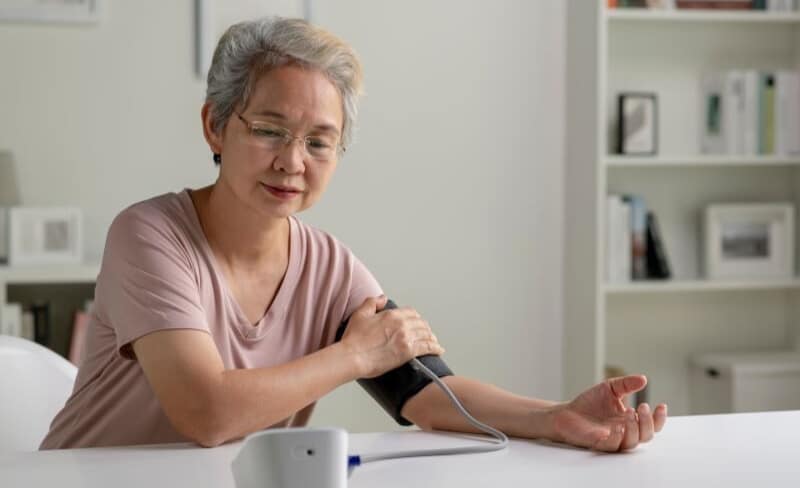Remote patient monitoring (RPM) is a vital solution for healthcare providers to manage chronic diseases and track patient health outside of traditional clinical settings. By utilizing digital technologies, healthcare professionals can efficiently collect patient data and analyze it remotely. A remote patient monitoring platform plays a key role in this process by integrating the data into healthcare systems and enabling proactive care.
What Is a Remote Patient Monitoring Platform?
A remote patient monitoring platform is the backbone of any RPM program. This software collects and analyzes data from patient devices, providing healthcare providers with real-time insights. It integrates with electronic health records (EHR) to ensure accurate documentation and improved patient care. Leading RPM platforms offer features such as:
- Customizable alerts
- Automatic data collection
- Real-time analytics for informed decision-making
An Example of a Remote Monitoring Platform
An example of a remote patient monitoring platform is TimeDoc Health’s RPM system. It combines user-friendly, cellular-enabled devices with robust software that integrates seamlessly with EHRs. This platform enables providers to monitor patient vitals in real-time, set alert thresholds, and receive notifications if readings fall outside normal ranges. This integration enhances decision-making and patient engagement, leading to better health outcomes.
Popular EHR Integrations for RPM Software
Common EHR systems that integrate well with remote patient monitoring platforms include Allscripts, athenahealth, Epic, and NextGen Healthcare. TimeDoc Health offers seamless integration with these systems, which helps with:
- Improved documentation and clinical efficiency
- Faster patient enrollment and care coordination
- Organized and accessible patient information
- Effective chronic condition management
Technology Used in a Remote Monitoring System
Remote patient monitoring relies on two main technologies: the RPM devices that collect vital signs and the RPM platform that receives and analyzes this data. The remote patient monitoring platform provides a seamless interface for providers to view data, set thresholds, and receive alerts. This ensures timely interventions when necessary.
How Does a Remote Monitoring System Work?
Here’s an example of how a remote patient monitoring platform might be used with a new patient diagnosed with a chronic condition:
- Patient Education and Expectations: The provider educates the patient on their condition, treatment options, and how RPM can help manage their health. If RPM is suitable, the patient receives a device and instructions for use.
- Remote Monitoring: After activation, the patient begins using the device to collect health data, which is automatically transmitted to the provider’s remote patient monitoring platform. Alerts are set up to notify providers of abnormal readings.
- Patient Intervention (as Needed): If any readings fall outside expected ranges, the provider can intervene through a virtual or in-person consultation.
- Practice Extension: A solution like TimeDoc Health acts as an extension of the provider’s practice, handling patient education and monitoring, allowing the provider to focus on delivering high-quality care when most needed.
Remote patient monitoring software allows healthcare providers to track patient health in real-time, without the need for frequent in-person visits. By automatically collecting data from RPM devices, this software helps healthcare teams make timely, informed decisions about patient care. Providers can set custom thresholds and receive alerts when interventions are needed.
Implementing a Remote Patient Monitoring Program
To implement an effective remote patient monitoring platform, follow these steps:
- Define Objectives and Scope: Identify the goals of your RPM program, such as managing specific chronic conditions or improving patient-provider relationships.
- Evaluate Solutions: Choose the right RPM devices and software platform, considering factors like patient needs and device compatibility.
- Patient Education: Educate patients on how to use RPM devices and the benefits of participating in remote monitoring.
- Monitor and Act: Providers use the remote patient monitoring platform to track patient data and intervene when necessary, ensuring care is delivered at the right time.
A robust remote patient monitoring platform like TimeDoc Health allows providers to seamlessly integrate data with existing EHR systems, saving time and improving patient outcomes.
TimeDoc Health: A Remote Patient Monitoring Platform
TimeDoc Health is one of the top remote patient monitoring companies that’s leading the charge in transforming patient care. By integrating easy-to-use devices with advanced RPM software, we provide healthcare providers with the tools they need to deliver proactive, efficient care. Our comprehensive platform supports many different EHR integrations, gives you access to real-time data analytics, and helps you enhance patient engagement. If you’re ready to ensure that your patients can receive the highest quality care without the constraints of traditional healthcare settings, you’re ready for TimeDoc Health.
With software like TimeDoc Health, the future of healthcare is more connected.




